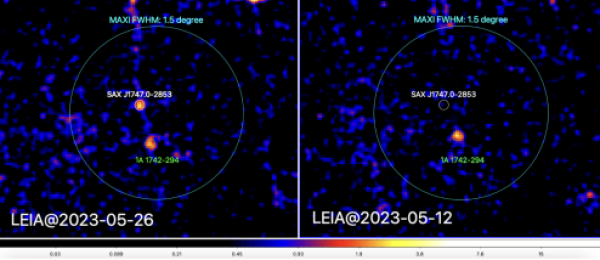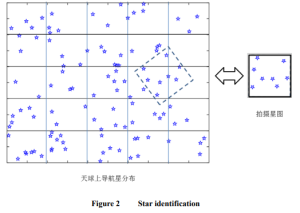
Accurate attitude measurement is the foundation for achieving space missions. Star trackers use stars as reference objects to measure the three-axis attitude of spacecraft. Compared with other attitude measurement devices, they have strong autonomy, high accuracy, and high reliability, and have been widely used in various high-precision autonomous navigation systems. In recent years, with the rise of deep space exploration and small satellite boom, more stringent requirements have been put forward for the accuracy, volume, quality, power consumption and other performance of star tracker. Therefore, research on star sensor related technologies is of great significance. The development of hardware technology can effectively achieve miniaturization and low power consumption of star sensors, but the improvement of other key performance mainly relies on star point extraction algorithms and star map recognition algorithms.
The crucial aspect of autonomous attitude measurement for star sensors throughout the day is the recognition of all sky spherical star maps, which is also the core algorithm of star sensors. The star sensor equipment currently being developed is equipped with a navigation star catalog, and the recognition of the all-sky spherical star map is mainly aimed at the problem of space loss. It can achieve complete autonomous determination of the three-axis attitude of the space vehicle, without the need for ground measurement and control systems to determine. Therefore, the problem of communication delay causing the inability to achieve high attitude determination efficiency has been effectively solved, reducing operational costs in orbit. The measurement accuracy of star sensors is influenced by the number of star points recognized in the global star map, and the reliability of attitude measurement also depends on the recognition rate of star map recognition. In addition, the robustness and speed of star map recognition also affect the reliability and frequency of star sensors.Essentially, matching the observed star in the celestial coordinate system with the corresponding navigation star in the star map captured by the star sensor is called star map recognition.In general, there are two working modes for star sensors, namely all celestial sphere and star tracking mode. The all celestial sphere mode requires star map shooting and matching within the entire celestial sphere range due to the lack of prior attitude data information; The star tracking mode performs star map recognition on the premise that prior pose information is known, which narrows the matching interval until it falls within the local sky area, thus reducing the difficulty of recognition to a greater extent.
After years of continuous development, for star sensors with medium accuracy and detectability of+6Mv, many mature all sky star map recognition algorithms can fully meet the requirements of star map recognition. At the same time, as the demand for accuracy continues to increase, the detectable limit magnitude also continues to improve, and the corresponding data volume of the navigation star library also shows an exponential increase.
With the increasing number of star points in the current algorithm, the error recognition rate also increases. Traditional star map recognition algorithms can better meet the task of all sky spherical recognition for medium stars (+5.0Mv -+7.5Mv). However, in the observation of weak and small targets, their corresponding star magnitude brightness is higher, possibly reaching+10Mv or above. Currently, there is no public literature on autonomous star map recognition algorithms for all sky spherical stars above+10Mv. However, this algorithm is indispensable for monitoring weak and small targets in starry backgrounds, Especially when the relative motion between the star sensor camera and a small moving target is slow, it is necessary to use star map recognition method to distinguish them. Therefore, autonomous star map recognition algorithms in all celestial mode are crucial technologies within the scope of star map recognition.

Send us a message,we will answer your email shortly!